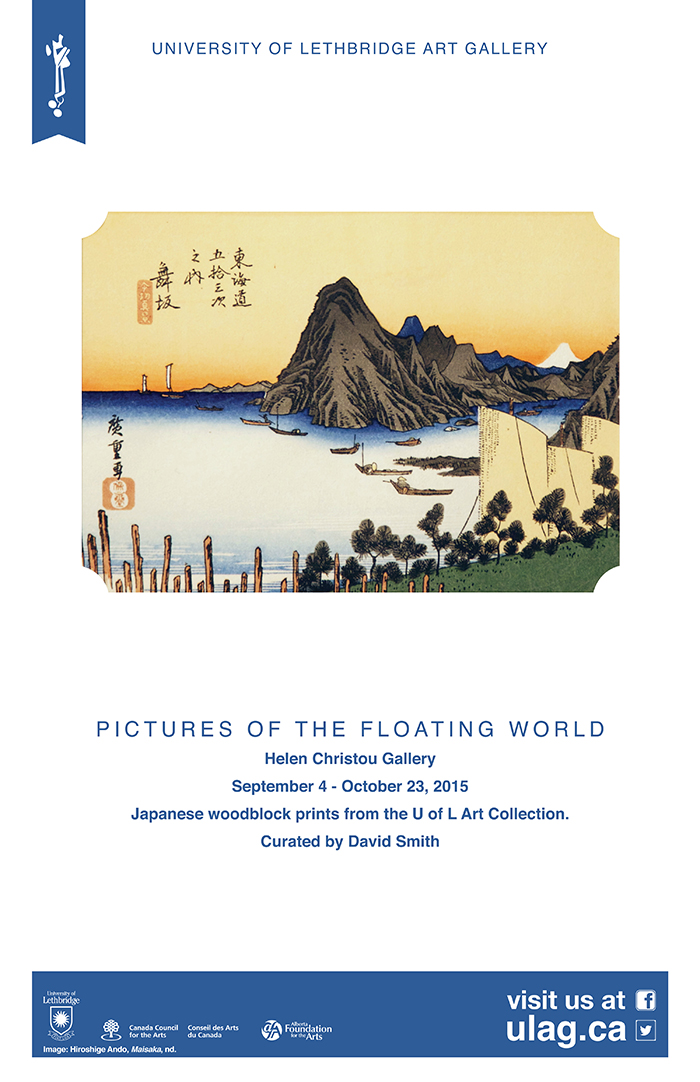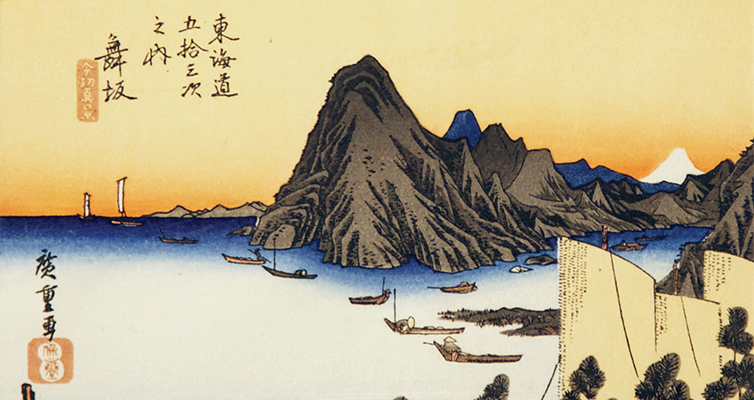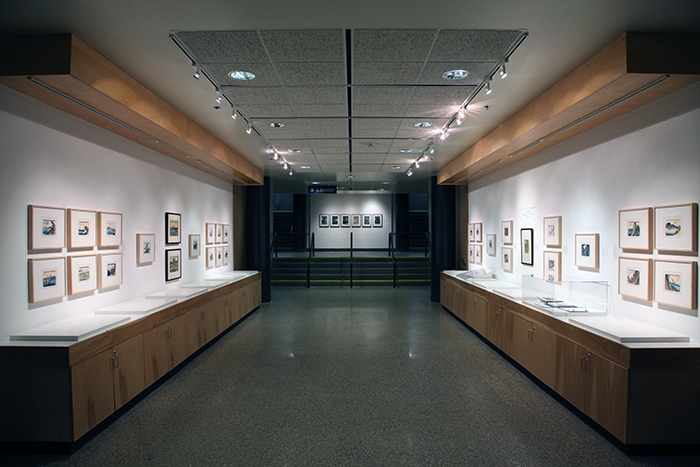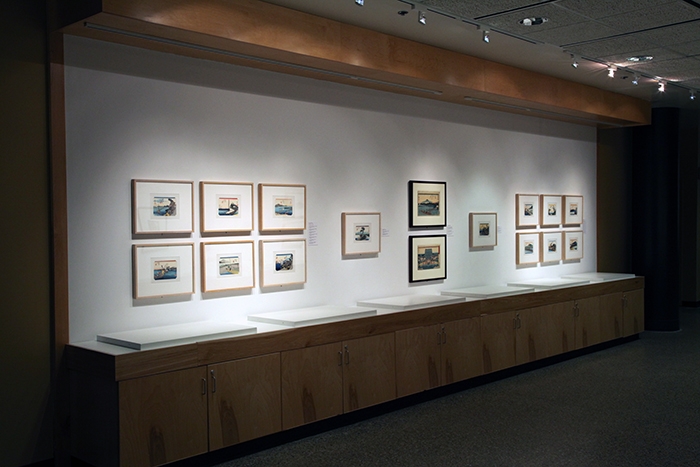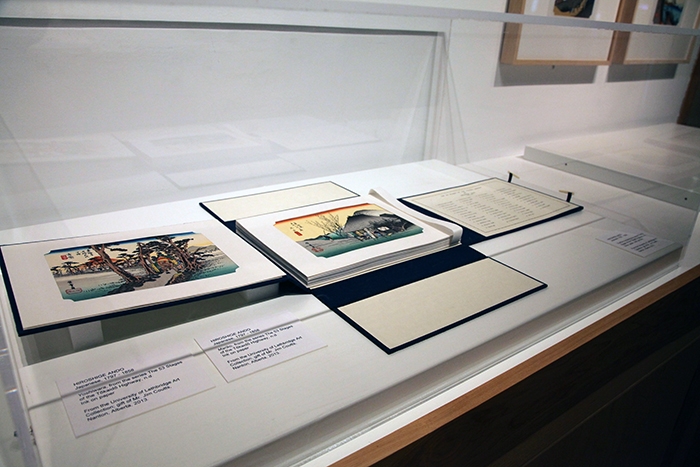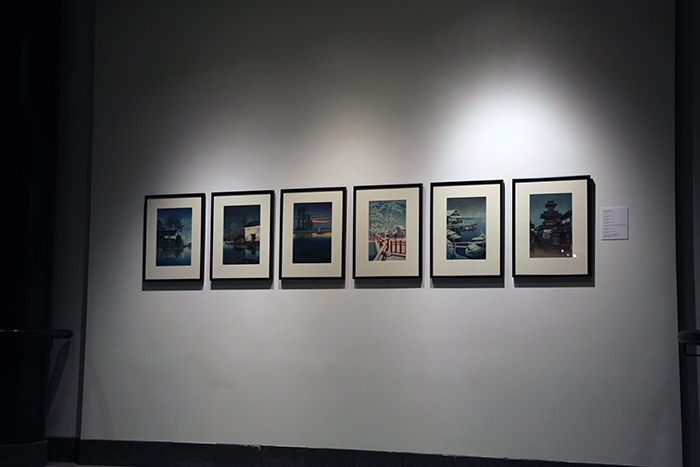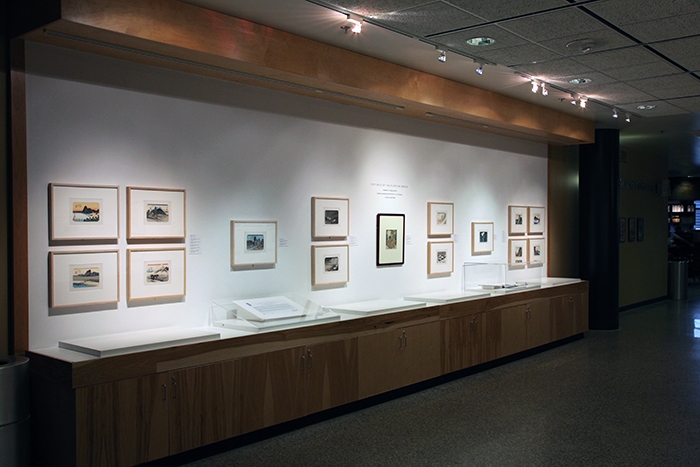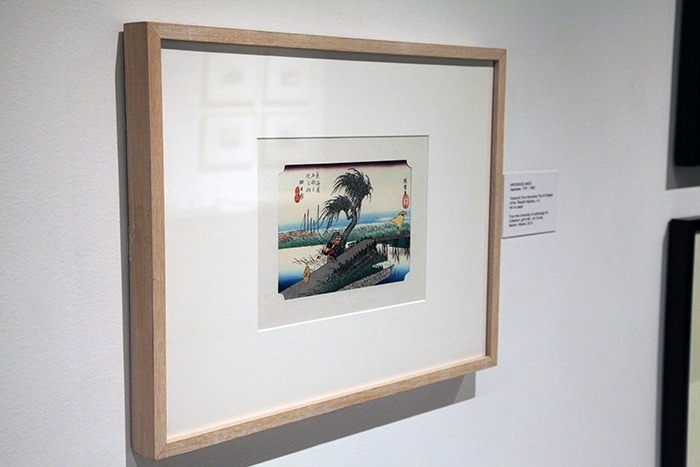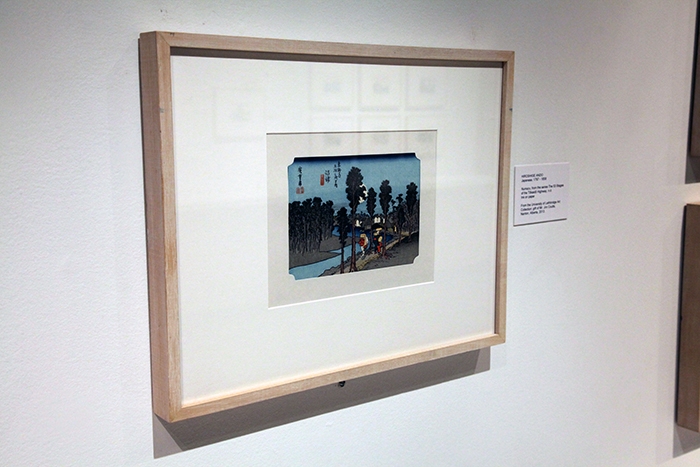Curated by David Smith
This exhibition features a selection of nineteenth and twentieth century Japanese woodblock prints from the U of L Art Collection. All works on exhibit are the result of a generous donation by the late Mr. Jim Coutts. Featuring prints by Yashima Gakutei, Hasui Kawase and Hiroshige Ando.
Curatorial Statement
The Japanese word used to describe woodblock prints from the 17th through 19th century is ukiyo-e, which translates to “pictures of the floating world”. In ukiyo-e the production of prints was divided between the artist, carver, printer and publisher. Later in the 20th century, Japanese artists began carving and printing their own prints; this style is referred to as shin-hanga or “new prints”. Both genres of print are included in this exhibition. The six works by Hasui Kawase on the west wall exemplify the shin-hanga genre, while the remaining works on the north and south walls by Hiroshige Ando and Yashima Gakutei are executed in the ukiyo-e genre.
Between 1633 and 1853, Japan was mostly closed for trade with the western world. Under the foreign relations policy sakoku, no foreigner could enter and no Japanese citizen could leave; those defying the law were subject to the death penalty. When Japan officially opened for trade with the western world, there was a market demand for the inexpensive mass produced ukiyo-e prints. They made their way to Europe and into the hands of some of the most famous artists in the world including Manet, Toulouse-Lautrec, Monet, Gauguin and Van Gogh. They had an important impact on the way these artists arranged their compositions and the patterns and textures they included in their works. In art history, the term Japonism is used to describe this influence of Japanese art, fashion and aesthetics on western culture.
The majority of the works on the north and south walls are by Hiroshige Ando and come from a series called, The 53 Stages of the Tōkaidō Highway. In the 19th century this was an important route between Tokyo and Kyoto, which was mostly travelled by foot (as cargo was sent by boats). Along this route there were 53 government sanctioned posts where travellers could rest; some of the stations required travellers to present their travelling permits. This was such a popular subject that around 30 different series by Hiroshige Ando depicting the stations are known to exist.
The works selected for this exhibition were all the result of a recent donation to the University of Lethbridge Art Gallery by the late Mr. Jim Coutts of Nanton, AB.
David Smith
Preparator/Assistant Curator
